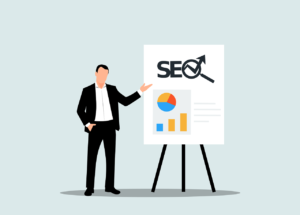Drive Traffic and Grow Your Store
If you’re running a Shopify store, you already know that simply building a site isn’t enough to attract traffic and drive sales. The secret sauce? Shopify SEO Optimisation.

SEO, or Search Engine Optimization, is the process of making your online store more visible on search engines like Google. Better visibility means more potential customers finding your store, all without spending a fortune on ads. But SEO isn’t a one time task it’s an ongoing process that pays off in the long run.
Ready to learn how to master Shopify SEO Optimization? Let’s dive into this ultimate guide that will motivate you to turn your store into an unstoppable ecommerce powerhouse!
What is Shopify SEO Optimisation?
Shopify SEO is the art of optimizing your Shopify store to rank higher in search engine results. It involves improving your site’s structure, content, and visibility, so your target audience finds you easily when searching for products.
Why is this important? Because organic traffic is free, and the higher you rank, the more likely customers will visit your store.
Why Shopify SEO Optimisation Matters
- Organic Traffic is Sustainable: Paid ads are great but expensive. SEO ensures you receive consistent traffic without the constant ad spend.
- Improved Customer Experience: SEO optimizations like faster load times and mobile friendly designs make your site enjoyable for users.
- Long Term Results: While SEO takes time, the benefits compound, giving you consistent results over the long haul.
Step-by-Step Shopify SEO Optimization Guide for 2025
Search engine optimization (SEO) is crucial for ensuring your Shopify store ranks well in search engine results and attracts organic traffic. By following a comprehensive SEO strategy, you can boost your store’s visibility and sales. This step-by-step guide will take you through the essential steps of Shopify SEO optimization in 2025, with a focus on using the best Shopify SEO Optimisation app to streamline your efforts.
1. Start with Keyword Research
Keyword research is the foundation of any successful SEO strategy. Identifying the right keywords ensures your Shopify store is targeting the terms your potential customers are searching for. Here’s how to effectively conduct keyword research:
Tips for Effective Keyword Research:
- Use SEO Tools: Tools like Google Keyword Planner, Ahrefs, and Ubersuggest can help you identify high-performing keywords.
- Search Volume and Competition: Focus on keywords with a high search volume but low competition to give your store a better chance to rank.
- Long-Tail Keywords: Long-tail keywords (e.g., “best organic skincare products”) are often easier to rank for and tend to convert better because they reflect specific user intent.
Example: If you sell handmade candles, you could target keywords like “natural soy candles,” “vegan candle gifts,” or “best scented candles.” These keywords are specific and have a higher likelihood of attracting qualified traffic.
2. Optimize Your Shopify Pages
Once you’ve gathered a list of target keywords, the next step is to optimize key areas of your Shopify store. Here’s how to optimize various parts of your website for better SEO:
Homepage Optimization:

- Title Tag: Include your primary keyword in the title tag. For example, “Natural Soy Candles – [Your Store Name]”.
- Meta Description: Write a compelling meta description that incorporates your primary keyword and encourages clicks.
- Introduction: Add a brief intro on your homepage, naturally incorporating your target keywords to make the content engaging and informative.
Product Pages Optimization:
- Product Titles: Use your targeted keywords in the product titles. For instance, “Vegan Soy Candle Gift Set.”
- Product Descriptions: Write unique and engaging product descriptions that highlight the benefits of the product. Ensure you naturally incorporate your keywords.
- High-Quality Images: Add high-quality images of your products, and make sure to optimize their ALT text by including relevant keywords.
Category Pages Optimization:
- Keyword Hubs: If you have collections or categories of products, treat them as keyword hubs. For example, for a collection of skincare products, you could optimize it for “natural skincare products.”
By strategically placing keywords in these key areas, you ensure search engines and customers can easily understand your products and their value.
3. Structure Your Shopify Store for SEO
The structure of your Shopify store plays an important role in how search engines crawl and index your website. A well-structured store makes it easier for search engines to understand the hierarchy of your content, which can positively impact your rankings.
SEO-Friendly Store Structure Tips:
- Descriptive URLs: Use clear and descriptive URLs that include keywords. For example, use “/collections/vegan-candles” instead of a generic URL.
- Simplify Site Hierarchy: Maintain a simple structure with a clear flow from Homepage → Category → Product. This makes it easier for both users and search engines to navigate your site.
- Internal Links: Use internal links to connect related products and categories. This helps spread link equity across your site and keeps users engaged.
4. Improve Site Speed
A fast-loading website is essential for both SEO and user experience. Google uses site speed as a ranking factor, and slow sites can lead to higher bounce rates, negatively affecting your SEO performance.
How to Boost Your Shopify Site Speed:
- Choose Lightweight Themes: Select a responsive, fast-loading theme for your Shopify store.
- Compress Images: Use apps like TinyIMG or Minifier to compress images without sacrificing quality, ensuring quicker loading times.
- Limit Apps: Be mindful of the number of apps you install. Too many apps can slow down your website. Only use the essential ones that improve performance.
5. Make Your Store Mobile-Friendly
With more consumers shopping on mobile devices, ensuring your Shopify store is mobile-friendly is crucial. A non-responsive website can hurt your rankings and sales potential.
Quick Tips for Mobile Optimization:
- Responsive Theme: Choose a responsive Shopify theme that automatically adjusts for different screen sizes.
- Easy Navigation: Ensure that buttons and links are easy to tap, and that navigation is simple on smaller screens.
- Test Mobile Performance: Use Google’s Mobile-Friendly Test tool to check how well your site performs on mobile devices.
6. Leverage Content Marketing
Content marketing is a powerful way to improve your SEO and engage with your audience. Creating valuable, keyword-rich content helps you rank higher and position yourself as an authority in your niche.
Ideas for Shopify Content Marketing:
- Blog Posts: Write blog posts on product benefits, industry trends, or how-to guides that incorporate your target keywords.
- Videos: Create video tutorials or showcase your products in action to engage your audience and enhance your SEO.
- Customer Stories: Highlight customer reviews and testimonials to build social proof and trust.
Creating content not only helps your site rank higher but also helps you connect with customers and build loyalty.
7. Build Quality Backlinks
Backlinks—links from other websites to yours—are a key ranking factor. Search engines use backlinks to assess your website’s credibility and authority.
How to Get Backlinks:
- Guest Posts: Write guest posts for reputable blogs in your industry and include a link back to your Shopify store.
- Influencer Collaborations: Collaborate with influencers in your niche and have them review your products, linking back to your store.
- Create Shareable Resources: Offer free guides, infographics, or helpful resources that others in your industry would want to link to.
High-quality backlinks are crucial for improving your domain authority and search rankings.
8. Track and Adjust Your Strategy
SEO is a long-term strategy, and it’s important to continually track your performance and make adjustments as needed. Regularly reviewing your analytics and making data-driven decisions can help you stay ahead of the competition.
Key Metrics to Track:
- Organic Traffic: Monitor the volume of organic traffic coming to your store to see if your SEO efforts are paying off.
- Bounce Rate: Keep an eye on your bounce rate. A high bounce rate could indicate that your site isn’t engaging visitors effectively.
- Keyword Rankings: Track the rankings of your target keywords to measure your SEO success.
- Conversion Rate: Ultimately, SEO is about driving sales. Keep track of your conversion rates to understand how well your traffic is converting into paying customers.
By regularly adjusting your strategy based on data, you can continue improving your Shopify SEO performance.
9. Use the Best Shopify SEO App
To streamline and optimize your SEO efforts, using the best Shopify SEO Optimisation app is essential. These apps help you manage SEO tasks with ease, automate key processes, and provide real-time feedback. Some of the best Shopify SEO apps to consider include:
- SEO Manager: This user-friendly app helps you optimize your meta tags, keywords, and image alt text. It provides feedback on SEO performance and offers tips for improving rankings.
- Plug In SEO: This app detects SEO issues like broken links and missing meta descriptions and provides actionable suggestions to fix them.
- Smart SEO: Known for its automation features, Smart SEO generates meta tags and structured data for your store, reducing the time spent on manual SEO tasks.
The best Shopify SEO Optimisation app can save you time, improve efficiency, and ensure your store is always optimized for search engines.
Shopify SEO is a critical component of growing your online store and attracting organic traffic. By following this step-by-step guide, you can implement effective SEO strategies such as keyword research, on-page optimization, improving site speed, creating content, and building quality backlinks. Additionally, using the best Shopify SEO Optimisation app can help you automate key SEO tasks, making the process smoother and more effective. With consistent effort and the right tools, your Shopify store will rank higher on search engines and attract more customers, leading to increased sales and success.

FAQs about Shopify SEO Optimisation
- How long does it take to see results from Shopify SEO?
SEO is a long term strategy, and results typically take 3-6 months to show, depending on your niche and competition. - Can I do Shopify SEO myself?
Absolutely! With the right resources and consistent effort, you can implement Shopify SEO yourself. - Do I need apps for Shopify SEO?
While not mandatory, apps like SEO Manager or Plug in SEO can simplify optimization tasks. - What’s the role of social media in Shopify SEO?
While social signals don’t directly influence rankings, sharing your content on social media can drive traffic and improve brand visibility. - Is blogging necessary for Shopify SEO?
Blogging is an excellent way to rank for informational keywords, build authority, and attract organic traffic to your site.
Final Thoughts
Shopify SEO Optimisation is the key to unlocking your store’s potential and driving sustainable, long term growth. While it requires patience and effort, the rewards organic traffic, higher conversions, and greater profitability are worth it.
So, take one step at a time. Optimize your store, create amazing content, and watch your Shopify business thrive!
Let’s make your store the next big success story. Are you ready to master Shopify SEO?
Feel free to let me know if you’d like additional details or adjustments! 😊


